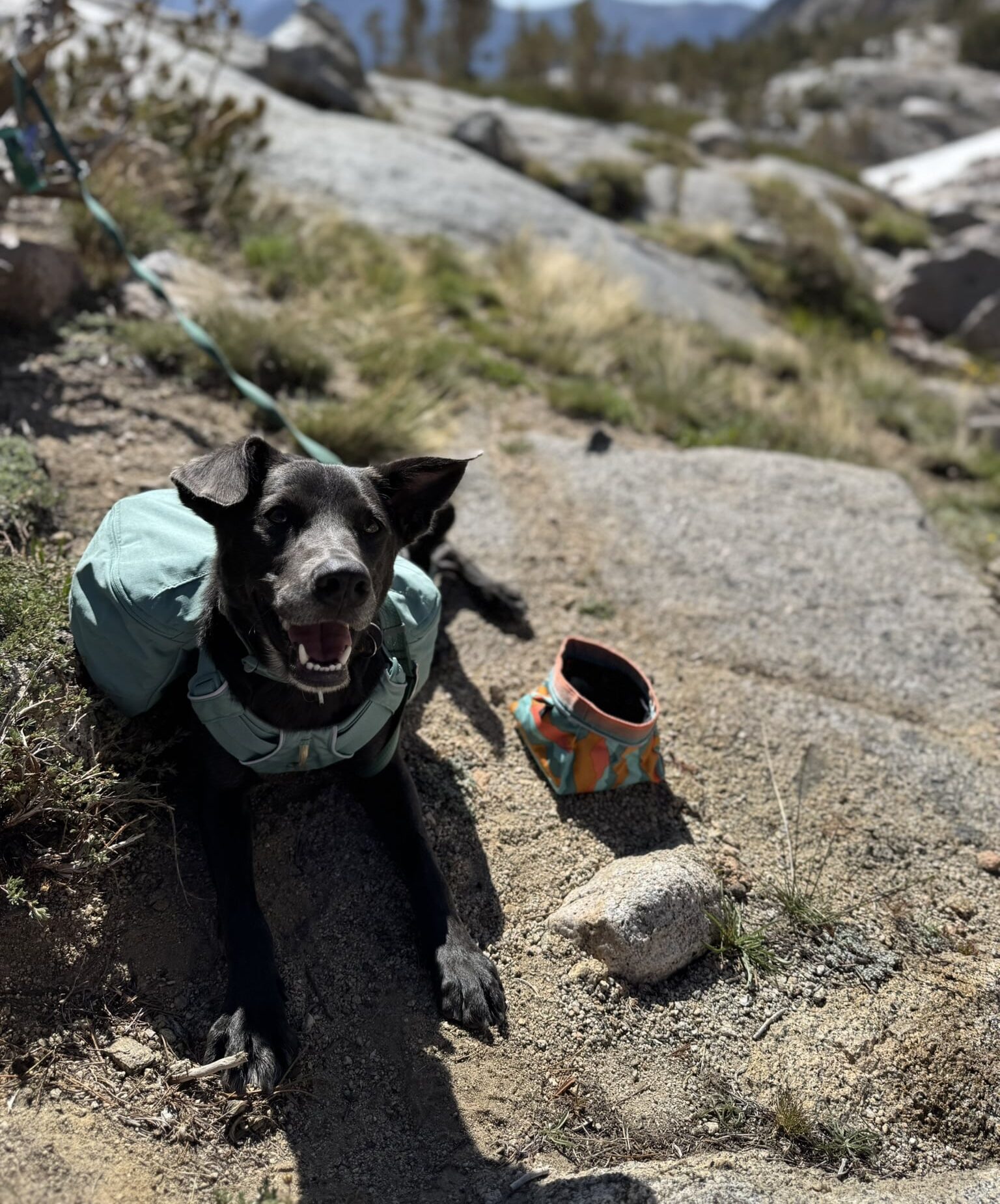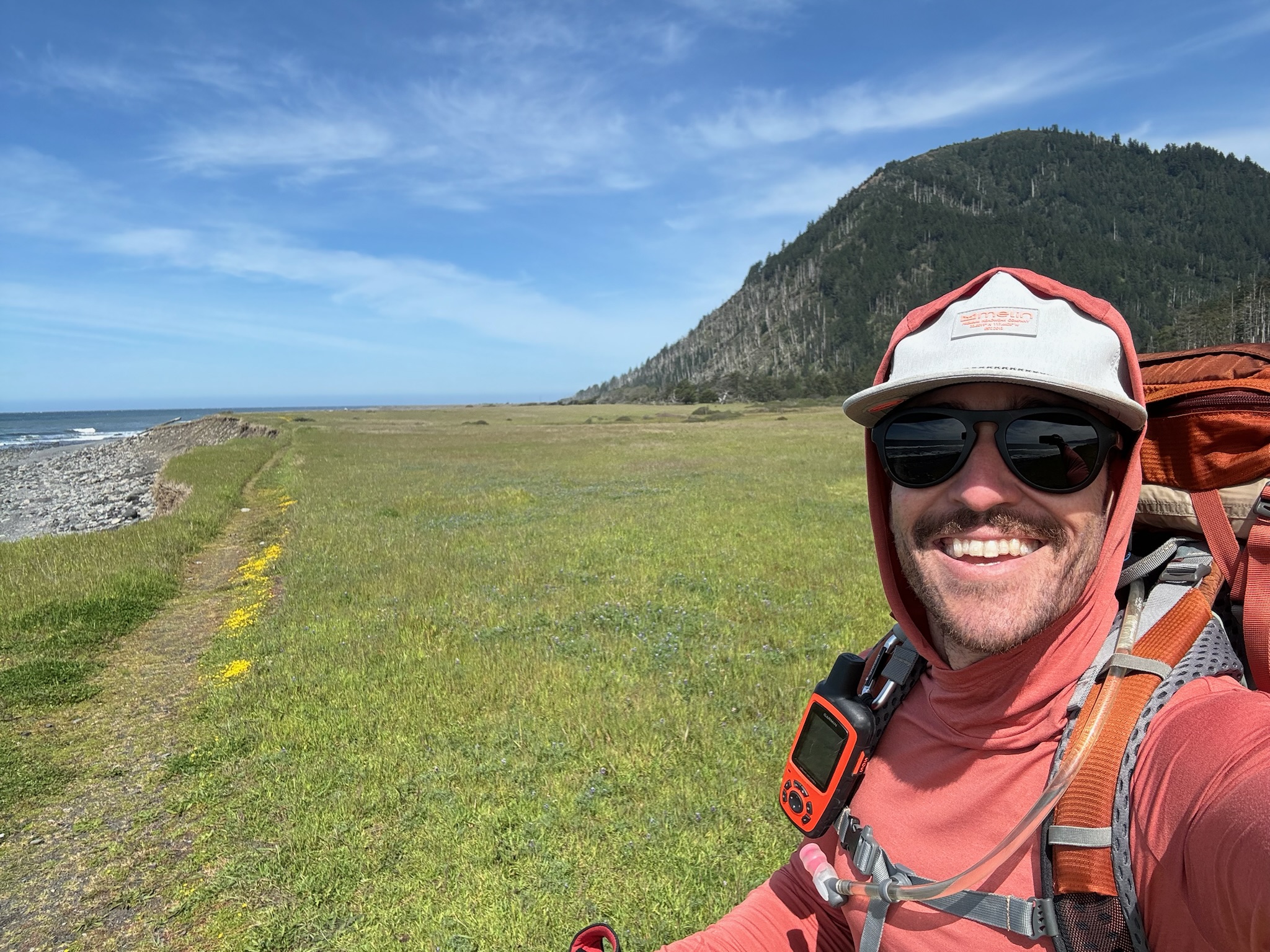Camping and hiking with your dog is one of the most rewarding ways to explore the outdoors. With the right preparation, you and your furry friend can enjoy the sights, sounds, and thrill of new adventures. To help ensure your trip is safe, stress-free, and fun, we’ve created the ultimate camping with a dog checklist—covering everything from essential gear to health precautions, trail etiquette, and overnight camping must-haves.
Whether you’re heading into the backcountry, pitching a tent at a dog-friendly campground, or just day hiking with your dog, this guide and camping with a dog checklist has you covered.

Why Camp and Hike With Your Dog?
Spending time in the wild with your furry friend is not just fun—it’s beneficial for both of you. Dogs get a chance to burn energy, engage their senses, and it’s a great way for them to deepen their connection with you. You benefit from the companionship, security, and joy of watching your pup thrive outdoors.
But a successful dog camping trip takes more than tossing your tent and leash in the car. You’ll need to consider your dog’s fitness level, comfort, hydration, food needs, and the terrain you’re exploring.
Let’s dig into the planning tips and camping with a dog checklist to help you get fully prepared.
Pre-Trip Planning Essentials
Before heading out, it’s a good idea to do your homework.
Confirm the Area Is Dog-Friendly
Not all parks and trails allow dogs. Always check:
- Trail regulations: Some national parks and national forests prohibit dogs on some or all trails.
- Camping rules: Ensure the campground offers dog-friendly campsites. Campgrounds may require leashes or restrict dogs from certain areas.
- Backcountry guidelines: Some wilderness areas limit or dog allow dogs.
Search for “dog-friendly hiking trails and campgrounds” on apps like AllTrails, Hipcamp, or the National Park Service website. Even if it’s not your first time, regulations can change, so it’s always good to double-check. Looking for other sites to book a campsite? Check out Book A Campsite: The Ultimate Website Guide
Vaccinations and Health Prep
Visit your vet before your trip to ensure:
- Rabies and core vaccinations are up to date
- Your dog is protected against ticks, fleas, and heartworm
- You carry any necessary prescriptions or allergy meds
Tip: Carry a copy of your dog’s vaccination records in case you need proof at the campground.
Identification and Microchip
Accidents happen. Make sure your dog wears:
- A collar with a current ID tag
- A microchip (double-check that your contact information is registered and current)
- Optional: A GPS tracker collar for off-leash hiking or emergencies
Camping With a Dog Checklist: Everything You Need
Use this camping with a dog checklist to make sure you’ve packed the essential items you and your dog need for a safe and enjoyable camping experience.

Trail and Hiking Essentials
- Leash 6ft – For control on the trail
- Dog’s Collar or Harness – I prefer a harness to a dog collar for my dog while hiking. Feels like it’s more secure and gentle. She still wears her collar, as it has her tags on it.
- Collapsible food & water bowls – Collapsible bowls are lightweight and easy to store. I generally bring one and use it for both water and feeding. However, you can bring two if you prefer to use one for each.
- Dog Backpack – For Hiking and backpacking, great for easy access to things you might need while on the trail, like their booties or a water bowl. I didn’t have my dog carry, but that’s always an option as well. If you’re going backpacking with your dog, keep their pack weight under 25% of their body weight and distribute gear evenly.
- Paw Boots – Protects your dog’s paws from hot, rocky, or snowy terrain. I generally keep them in my dog’s pack and make a call on the trail if we need them or not. My dog doesn’t love wearing them, so I hold out until it’s necessary. Paw Balm is an option as well for dogs that will not walk in paw boots.
- Dog Food & Treats – I pack a little more food than normal to accommodate the extra activity. My dog is only about 35 pounds, so I’ll throw in an extra ¼ cup per meal. Sometimes she eats it all, sometimes there’s a little left over.
Camp Comfort and Overnight Gear
- Sleeping Pad or Bed – For backpacking, I bring a closed foam folding pad, and for car camping, I bring her dog bed. However, she usually ends up cuddling up with me at some point in the night.
- Blanket – For colder weather, I’ll throw in a puff blanket for my dog’s bed
- Towel and Wipes – Dogs inevitably get wet and dirty, a towel and some dog wipes will help ensure you keep as much of the extra wetness and dirt out of your tent as possible.
- Rain Coat – Helps keep your dog dry on rainy days
- Favorite Toy and/or Chews – This is one thing I didn’t bring on my first camping trip with my dog, and will make sure to bring every time going forward. This will help keep them calm and occupied at camp
- Cooling Vest (optional) – This one is entirely optional, but my dog’s fur is black, so I also pack a white cooling vest. White helps reflect the sun, and the vest is water absorbent, so you can soak it before putting it on for the cooling effect.
- Headlamp (for you) – If you don’t already have one on your camp packlist, add one. Useful for nighttime potty breaks.
- LED Clip Light (for your dog) – Attached to their collar or harness, and it’ll help you spot them easier in the dark.
- Extra Leash 20ft – For around camp to allow the dog more room to roam, but keeping them within the confines of your site. You can also use a long line or rope instead.
Health and Safety
- Poop Bags – Always clean up after your pet. There are places, you can bury the dog poop, but even there, I find it easier to pick it up and throw it away.
- First-aid Kit – Includes vet wrap, tweezers, antiseptic, etc. More details below on items to include in your dog’s first-aid kit.
Check out the exact gear I pack for Dill, My Gear for Camping and Hiking With a Dog
Hiking With Your Dog: Trail Tips
When hiking with your dog, safety, hydration, and etiquette are key.
Know Your Dog’s Limits
Just like you, dogs need to build endurance. Start with shorter hikes and gradually increase to long hikes. Watch for signs of overexertion like:
- Excessive panting
- Lagging behind
- Limping or paw sensitivity
- Dehydration (check for dry gums or lethargy)

Bring Plenty of Water
For areas with limited or no water source, you’ll want to pack extra clean water for your dog. The weather, climate, and size of your dog will help you determine how much water to pack. Even if there’s a stream nearby, you’ll still want to pack clean water for your canine companion. Or a pro-tip—you can throw a small water filter into your dog’s pack so it’s easily accessible, and you can filter water on the go, so you don’t pack a lot of extra. Avoid letting them drink from stagnant or questionable sources, which can carry parasites like Giardia.
Practice Leave No Trace
Being a responsible dog owner in the great outdoors means:
- Keeping your dog on leash where required
- Cleaning up waste—use poop bags and pack it out
- Staying on trail to avoid trampling vegetation
- Avoiding off-leash interactions with wildlife or other hikers
For reactive dogs, avoid busy trails and be ready to communicate with others if they shouldn’t interact with your dog.
Environmental Hazards & Toxins
The outdoors is full of unfamiliar sights and smells—some of which can be harmful to your dog. Keep an eye out for toxic plants like mushrooms or poison oak, and don’t let your pup eat anything off the ground. Avoid letting them drink from algae-covered lakes or puddles, which can contain harmful bacteria or parasites. Be especially cautious around campsites, where leftover food, burnt wood, or trash can pose a serious risk if ingested. A little supervision goes a long way in keeping your dog safe.
Tick and Wildlife Awareness
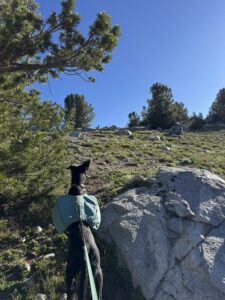
Ticks and wildlife can pose hidden risks on the trail, so it’s important to stay vigilant for your and your dog’s safety.
- Be alert for wildlife like porcupines, skunks, or snakes.
- Avoid letting your dog wander into tall grass or bushes.
- Always do a post-hike tick check, especially around ears, paws, and groin.
- Don’t let your dog wander out of sight—off-leash dogs can startle wildlife or attract predators, and in some cases, may unknowingly lead danger back toward camp.
Sleeping Arrangements & Camp Setup
Where Should My Dog Sleep?
Dogs should sleep:
- Inside your tent: Safest from bugs, wild animals (like predators), and weather
- On a dog sleeping bag or pad: Provides insulation and comfort
- Near you: Keeps them calm and deters wandering or barking

Food Storage
Just like human food, dog food can attract bears, raccoons, and other wild animals. Store it in:
- A bear canister
- A bear bag (hung from a tree)
- An odor-proof container in your car if you’re not backcountry camping
Don’t leave food out overnight, even treats!
Nighttime Safety Tips
Once the sun goes down, it’s important to keep your dog safe and visible around camp. Attach a clip-on LED light or reflective band to their collar so you can easily spot them in the dark. Keep them leashed or tethered at night—even well-trained dogs can wander off if startled by wildlife or unfamiliar sounds. If your dog is reactive, consider adding a visual barrier at the tent entrance or using calming chews to help them settle. And don’t forget a headlamp for yourself—midnight potty breaks are a lot easier when you’re not fumbling in the dark.
Camping With a Dog Checklist: First Aid Kit Must-Have Items
Nature is unpredictable. Make sure your dog’s first-aid kit includes:
- Gauze and vet wrap
- Antiseptic wipes
- Tweezers and tick remover
- Benadryl (dosage from vet)
- Booties or paw wrap
- Hydrogen peroxide (to induce vomiting—only under vet guidance)
- Copy of vet contact info and nearby emergency vets
Bonus Tip: Download the Pet First Aid by American Red Cross app before your trip.
Weather Tips for Camping With Dogs
Dogs can suffer from heat stroke, hypothermia, or dehydration just like humans.
Hot Weather
- Hike early or late to avoid midday sun
- Take frequent water and shade breaks
- Avoid asphalt or hot rocks—test with your hand!
- Pack cooling gear (like a neck bandana or cooling vest)
Cold Weather
- Bring a dog jacket and sleeping bag
- Keep them dry and off cold ground
- Watch for signs of frostbite on ears, paws, and tail
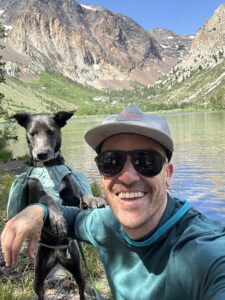
Road Tripping to Campgrounds With Dogs
If you’re driving to your adventure spot:
- Use a seatbelt harness or crate
- Take potty and water breaks every 2–3 hours
- Never leave your dog in a hot car
- Bring a car organizer with food, bowls, leash, and poop bags easily accessible
Pro tip: Do a mini trial run with a backyard campout or find some local pet-friendly campgrounds to get your dog used to sleeping in a tent.
Final Thoughts: Be Prepared, Stay Flexible
Camping and hiking with your dog is an unforgettable experience—but like any great outdoor trip, it requires planning. Your dog is counting on you to keep them safe, comfortable, and hydrated.
Use this camping with a dog checklist to organize your gear and prep routines. When you’re packed, ready, and relaxed, you’ll both be more open to spontaneous fun—like chasing sticks in alpine lakes, watching sunsets at camp, or snuggling under a starry sky.
Whether it’s your first trip or your fiftieth, these moments are what dog-friendly camping is all about. Don’t forget to take lots of photos—there’s nothing like seeing your dog’s happy face in the great outdoors.
Happy camping!
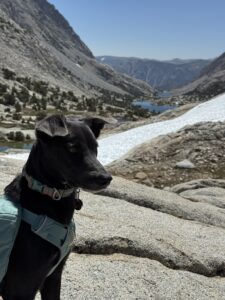
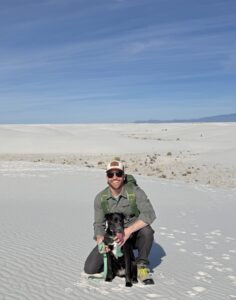
Hi, I’m Dave — a laid-back adventure enthusiast based in Southern California with a deep love for the outdoors and all the unexpected joys it brings. Through Plan | Pack | Discover, I share my passion for hiking, camping, surfing, and backpacking — and help you get ready for your own adventures, too.
More about me and Plan | Pack | Discover